Qing He
Jack
Gradient-Adaptive Policy Optimization: Towards Multi-Objective Alignment of Large Language Models
Jul 02, 2025Abstract:Reinforcement Learning from Human Feedback (RLHF) has emerged as a powerful technique for aligning large language models (LLMs) with human preferences. However, effectively aligning LLMs with diverse human preferences remains a significant challenge, particularly when they are conflict. To address this issue, we frame human value alignment as a multi-objective optimization problem, aiming to maximize a set of potentially conflicting objectives. We introduce Gradient-Adaptive Policy Optimization (GAPO), a novel fine-tuning paradigm that employs multiple-gradient descent to align LLMs with diverse preference distributions. GAPO adaptively rescales the gradients for each objective to determine an update direction that optimally balances the trade-offs between objectives. Additionally, we introduce P-GAPO, which incorporates user preferences across different objectives and achieves Pareto solutions that better align with the user's specific needs. Our theoretical analysis demonstrates that GAPO converges towards a Pareto optimal solution for multiple objectives. Empirical results on Mistral-7B show that GAPO outperforms current state-of-the-art methods, achieving superior performance in both helpfulness and harmlessness.
Panoramic Interests: Stylistic-Content Aware Personalized Headline Generation
Jan 21, 2025Abstract:Personalized news headline generation aims to provide users with attention-grabbing headlines that are tailored to their preferences. Prevailing methods focus on user-oriented content preferences, but most of them overlook the fact that diverse stylistic preferences are integral to users' panoramic interests, leading to suboptimal personalization. In view of this, we propose a novel Stylistic-Content Aware Personalized Headline Generation (SCAPE) framework. SCAPE extracts both content and stylistic features from headlines with the aid of large language model (LLM) collaboration. It further adaptively integrates users' long- and short-term interests through a contrastive learning-based hierarchical fusion network. By incorporating the panoramic interests into the headline generator, SCAPE reflects users' stylistic-content preferences during the generation process. Extensive experiments on the real-world dataset PENS demonstrate the superiority of SCAPE over baselines.
Controlling Large Language Models Through Concept Activation Vectors
Jan 10, 2025



Abstract:As large language models (LLMs) are widely deployed across various domains, the ability to control their generated outputs has become more critical. This control involves aligning LLMs outputs with human values and ethical principles or customizing LLMs on specific topics or styles for individual users. Existing controlled generation methods either require significant computational resources and extensive trial-and-error or provide coarse-grained control. In this paper, we propose Generation with Concept Activation Vector (GCAV), a lightweight model control framework that ensures accurate control without requiring resource-extensive fine-tuning. Specifically, GCAV first trains a concept activation vector for specified concepts to be controlled, such as toxicity. During inference, GCAV steers the concept vector in LLMs, for example, by removing the toxicity concept vector from the activation layers. Control experiments from different perspectives, including toxicity reduction, sentiment control, linguistic style, and topic control, demonstrate that our framework achieves state-of-the-art performance with granular control, allowing for fine-grained adjustments of both the steering layers and the steering magnitudes for individual samples.
AI-Driven Reinvention of Hydrological Modeling for Accurate Predictions and Interpretation to Transform Earth System Modeling
Jan 07, 2025Abstract:Traditional equation-driven hydrological models often struggle to accurately predict streamflow in challenging regional Earth systems like the Tibetan Plateau, while hybrid and existing algorithm-driven models face difficulties in interpreting hydrological behaviors. This work introduces HydroTrace, an algorithm-driven, data-agnostic model that substantially outperforms these approaches, achieving a Nash-Sutcliffe Efficiency of 98% and demonstrating strong generalization on unseen data. Moreover, HydroTrace leverages advanced attention mechanisms to capture spatial-temporal variations and feature-specific impacts, enabling the quantification and spatial resolution of streamflow partitioning as well as the interpretation of hydrological behaviors such as glacier-snow-streamflow interactions and monsoon dynamics. Additionally, a large language model (LLM)-based application allows users to easily understand and apply HydroTrace's insights for practical purposes. These advancements position HydroTrace as a transformative tool in hydrological and broader Earth system modeling, offering enhanced prediction accuracy and interpretability.
Get Large Language Models Ready to Speak: A Late-fusion Approach for Speech Generation
Oct 27, 2024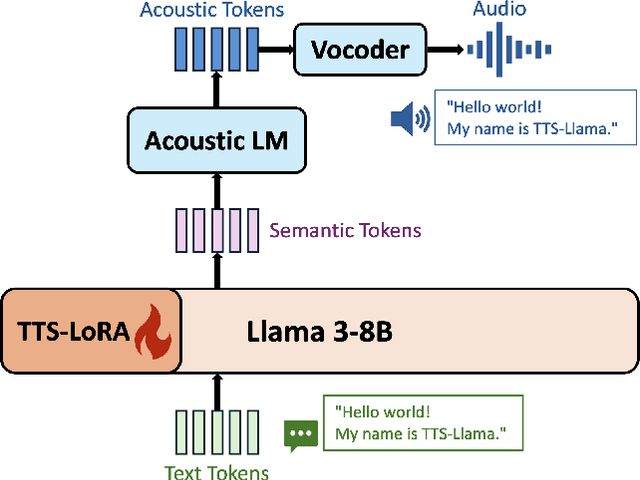
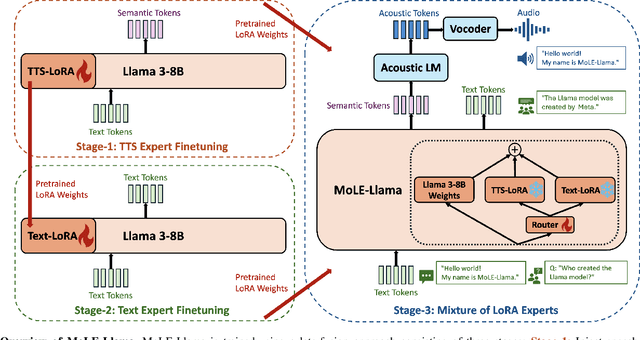
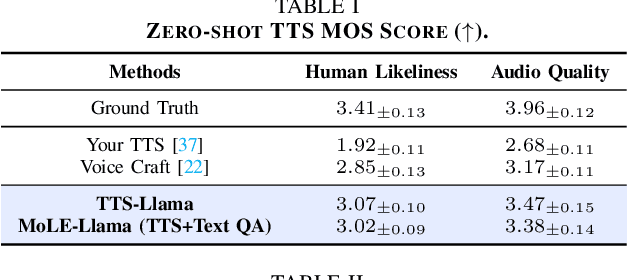
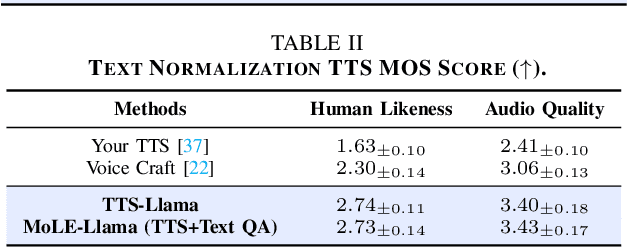
Abstract:Large language models (LLMs) have revolutionized natural language processing (NLP) with impressive performance across various text-based tasks. However, the extension of text-dominant LLMs to with speech generation tasks remains under-explored. In this work, we introduce a text-to-speech (TTS) system powered by a fine-tuned Llama model, named TTS-Llama, that achieves state-of-the-art speech synthesis performance. Building on TTS-Llama, we further propose MoLE-Llama, a text-and-speech multimodal LLM developed through purely late-fusion parameter-efficient fine-tuning (PEFT) and a mixture-of-expert architecture. Extensive empirical results demonstrate MoLE-Llama's competitive performance on both text-only question-answering (QA) and TTS tasks, mitigating catastrophic forgetting issue in either modality. Finally, we further explore MoLE-Llama in text-in-speech-out QA tasks, demonstrating its great potential as a multimodal dialog system capable of speech generation.
The Llama 3 Herd of Models
Jul 31, 2024Abstract:Modern artificial intelligence (AI) systems are powered by foundation models. This paper presents a new set of foundation models, called Llama 3. It is a herd of language models that natively support multilinguality, coding, reasoning, and tool usage. Our largest model is a dense Transformer with 405B parameters and a context window of up to 128K tokens. This paper presents an extensive empirical evaluation of Llama 3. We find that Llama 3 delivers comparable quality to leading language models such as GPT-4 on a plethora of tasks. We publicly release Llama 3, including pre-trained and post-trained versions of the 405B parameter language model and our Llama Guard 3 model for input and output safety. The paper also presents the results of experiments in which we integrate image, video, and speech capabilities into Llama 3 via a compositional approach. We observe this approach performs competitively with the state-of-the-art on image, video, and speech recognition tasks. The resulting models are not yet being broadly released as they are still under development.
Deep Neural Networks with Symplectic Preservation Properties
Jun 29, 2024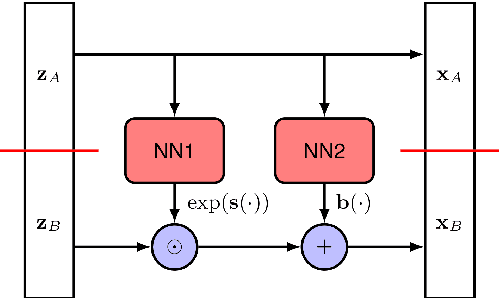
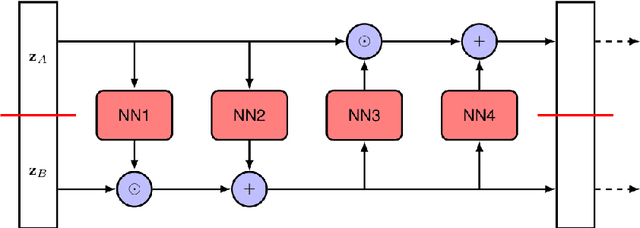
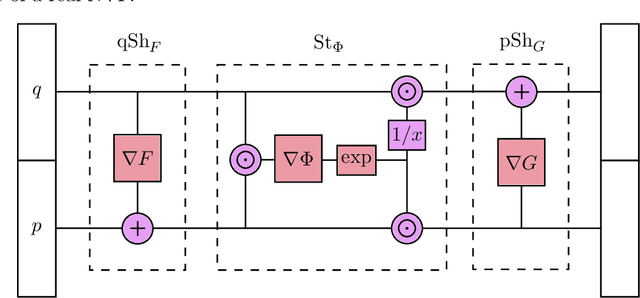
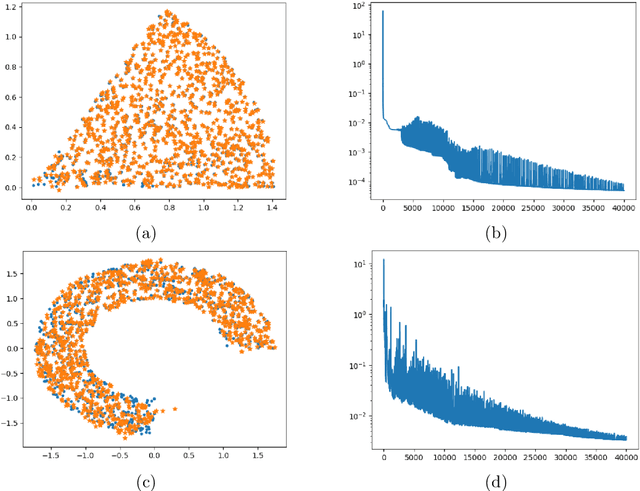
Abstract:We propose a deep neural network architecture designed such that its output forms an invertible symplectomorphism of the input. This design draws an analogy to the real-valued non-volume-preserving (real NVP) method used in normalizing flow techniques. Utilizing this neural network type allows for learning tasks on unknown Hamiltonian systems without breaking the inherent symplectic structure of the phase space.
LOGIN: A Large Language Model Consulted Graph Neural Network Training Framework
May 22, 2024



Abstract:Recent prevailing works on graph machine learning typically follow a similar methodology that involves designing advanced variants of graph neural networks (GNNs) to maintain the superior performance of GNNs on different graphs. In this paper, we aim to streamline the GNN design process and leverage the advantages of Large Language Models (LLMs) to improve the performance of GNNs on downstream tasks. We formulate a new paradigm, coined "LLMs-as-Consultants," which integrates LLMs with GNNs in an interactive manner. A framework named LOGIN (LLM Consulted GNN training) is instantiated, empowering the interactive utilization of LLMs within the GNN training process. First, we attentively craft concise prompts for spotted nodes, carrying comprehensive semantic and topological information, and serving as input to LLMs. Second, we refine GNNs by devising a complementary coping mechanism that utilizes the responses from LLMs, depending on their correctness. We empirically evaluate the effectiveness of LOGIN on node classification tasks across both homophilic and heterophilic graphs. The results illustrate that even basic GNN architectures, when employed within the proposed LLMs-as-Consultants paradigm, can achieve comparable performance to advanced GNNs with intricate designs. Our codes are available at https://github.com/QiaoYRan/LOGIN.
EFSA: Towards Event-Level Financial Sentiment Analysis
Apr 08, 2024Abstract:In this paper, we extend financial sentiment analysis~(FSA) to event-level since events usually serve as the subject of the sentiment in financial text. Though extracting events from the financial text may be conducive to accurate sentiment predictions, it has specialized challenges due to the lengthy and discontinuity of events in a financial text. To this end, we reconceptualize the event extraction as a classification task by designing a categorization comprising coarse-grained and fine-grained event categories. Under this setting, we formulate the \textbf{E}vent-Level \textbf{F}inancial \textbf{S}entiment \textbf{A}nalysis~(\textbf{EFSA} for short) task that outputs quintuples consisting of (company, industry, coarse-grained event, fine-grained event, sentiment) from financial text. A large-scale Chinese dataset containing $12,160$ news articles and $13,725$ quintuples is publicized as a brand new testbed for our task. A four-hop Chain-of-Thought LLM-based approach is devised for this task. Systematically investigations are conducted on our dataset, and the empirical results demonstrate the benchmarking scores of existing methods and our proposed method can reach the current state-of-the-art. Our dataset and framework implementation are available at https://anonymous.4open.science/r/EFSA-645E
Ultra-lightweight Neural Differential DSP Vocoder For High Quality Speech Synthesis
Jan 19, 2024



Abstract:Neural vocoders model the raw audio waveform and synthesize high-quality audio, but even the highly efficient ones, like MB-MelGAN and LPCNet, fail to run real-time on a low-end device like a smartglass. A pure digital signal processing (DSP) based vocoder can be implemented via lightweight fast Fourier transforms (FFT), and therefore, is a magnitude faster than any neural vocoder. A DSP vocoder often gets a lower audio quality due to consuming over-smoothed acoustic model predictions of approximate representations for the vocal tract. In this paper, we propose an ultra-lightweight differential DSP (DDSP) vocoder that uses a jointly optimized acoustic model with a DSP vocoder, and learns without an extracted spectral feature for the vocal tract. The model achieves audio quality comparable to neural vocoders with a high average MOS of 4.36 while being efficient as a DSP vocoder. Our C++ implementation, without any hardware-specific optimization, is at 15 MFLOPS, surpasses MB-MelGAN by 340 times in terms of FLOPS, and achieves a vocoder-only RTF of 0.003 and overall RTF of 0.044 while running single-threaded on a 2GHz Intel Xeon CPU.
 Add to Chrome
Add to Chrome Add to Firefox
Add to Firefox Add to Edge
Add to Edge